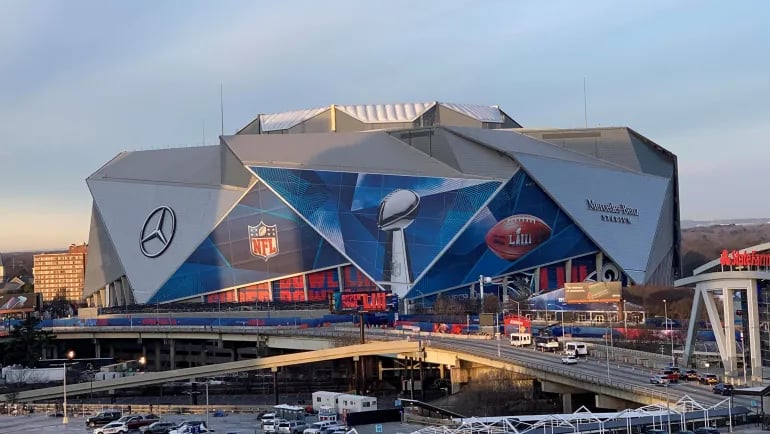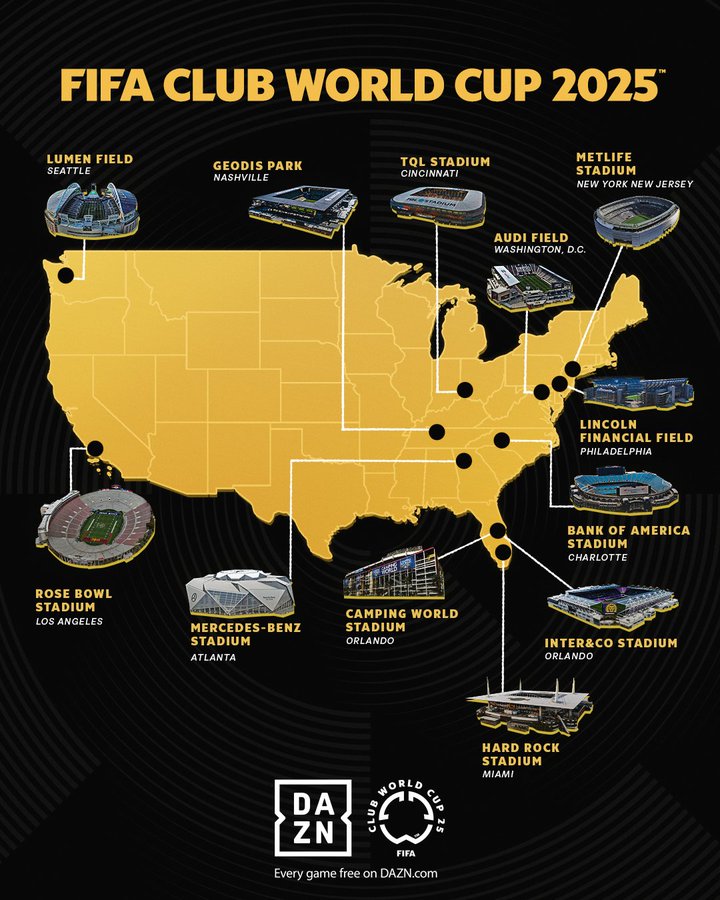FIFA Club World Cup 2025: A Month of Global Football in the U.S.
SPORT
6/8/20258 min read


Overview of the FIFA Club World Cup
The FIFA Club World Cup is a prestigious international tournament organized by the Fédération Internationale de Football Association (FIFA), featuring the champion clubs from each of the six continental confederations, along with the titleholder of the host nation's domestic league. Since its inception in 2000, the tournament has evolved into a significant event within the global football calendar, offering fans an opportunity to witness elite-level football from different regions of the world. The competition serves not only to crown the world’s best club but also to showcase the diversity and talent within the sport.
The structure of the FIFA Club World Cup typically consists of a series of knockout matches, culminating in a final to determine the champion. While the format has undergone various changes over the years, the essence of the tournament remains intact, fostering a spirited competition among the world’s elite clubs. As the event gears up for its 2025 edition, the excitement is palpable, particularly as it will be hosted in the United States—a nation with a rapidly growing football culture. This hosting opportunity is expected to ignite greater interest in the sport across the country, translating into a major celebration of soccer.
Tournament Dates and Duration
The FIFA Club World Cup 2025 is set to be an exciting event, running from June 14 to July 13, 2025. This highly anticipated tournament brings together the champions of the most prestigious football clubs across the globe, creating a month-long celebration of international football. The scheduling of matches throughout this period has been meticulously planned to ensure that teams have sufficient time to prepare and recover between games, while also maximizing the experience for fans attending the matches.
The tournament will kick off on June 14, marking the beginning of a four-week period filled with high-stakes competition. Participating teams will compete in various stages, starting with group matches that are crucial for determining who advances further in the tournament. The specific match schedule will also be designed to accommodate the travel requirements of international teams, ensuring that all participating clubs can reach their venues efficiently. This is particularly important in a vast country like the United States, where match locations may span across several states.
Fans can expect a blend of excitement, passion, and camaraderie as they gather to support their favorite teams. The final match on July 13 will crown the champion, concluding this prestigious tournament in dramatic fashion. The timing of the matches is significant not only for the teams, but also for the fans who plan to engage in this global event. The compact duration of just under a month will create an atmosphere filled with competitive fervor, as teams vie for the title of FIFA Club World Cup champion. Overall, the carefully structured timeline sets the stage for unforgettable football moments that fans of the sport will cherish for years to come.
Host Cities and Venues
The FIFA Club World Cup 2025 is set to capture the attention of football fans worldwide, with eleven U.S. cities chosen as the vibrant hosts for this prestigious tournament. Each city boasts rich cultural and historical significance, while also showcasing state-of-the-art stadiums that meet international standards.
Beginning with the east coast, Philadelphia's Lincoln Financial Field will serve as one of the premier venues. Known for its passionate sports culture, Philadelphia offers a unique blend of history and modernity, promising an unforgettable experience for fans. Traveling south, Atlanta's Mercedes-Benz Stadium stands out not just for its architectural prowess but also for its ability to host large crowds. This facility is renowned for its innovative design and boasts a retractable roof, making it an ideal venue for diverse weather conditions.
Moving to the Midwest, Chicago’s Soldier Field is celebrated for its iconic colonnades and rich football legacy, providing a historical backdrop for the matches. In the heart of Texas, Dallas' AT&T Stadium is known as one of the largest and most spectacular stadiums in the world, providing a cutting-edge environment for both players and fans alike.
On the West Coast, Los Angeles' SoFi Stadium has quickly made a name for itself as a premier sporting venue, emphasizing a modern fan experience. San Francisco, represented by Levi's Stadium in Santa Clara, harmonizes high-tech amenities with the charm of the Bay Area.
Lastly, cities such as Miami, Seattle, and New York will also contribute to the tournament, bringing their unique flavors and football fervor. Each venue offers its own distinct atmosphere, reflecting the diverse fabric of America while providing fans a chance to engage with the beautiful game in a multitude of settings. The combination of these host cities is anticipated to create a month of thrilling football and cultural exchange during the FIFA Club World Cup 2025.
Stadiums Leading the Excitement
The FIFA Club World Cup 2025 promises to be a captivating event, staged across 12 distinguished stadiums in the United States. These venues, renowned for their architectural brilliance and capacity, are equipped to handle a significant influx of enthusiastic fans. Each stadium not only serves as a platform for exhilarating matches but also boasts a unique history and state-of-the-art facilities.
Among the selected venues, the iconic MetLife Stadium in East Rutherford, New Jersey, stands out with a seating capacity of approximately 82,500. Renowned for hosting numerous high-profile events, including Super Bowls and international soccer matches, its modern amenities enhance the spectator experience, making it an ideal choice for the FIFA Club World Cup.
In contrast, the Lumen Field in Seattle, with its capacity of around 68,000, is celebrated for its vibrant atmosphere and stunning views of the city skyline. The stadium has a rich history of hosting MLS matches and international fixtures, earning a reputation as one of the most electrifying locations for football enthusiasts.
Another major venue, the NRG Stadium in Houston, Texas, accommodates approximately 72,000 fans. This multi-purpose stadium has successfully hosted the Super Bowl and various concerts, demonstrating its versatility and commitment to delivering exceptional events. It features a retractable roof, ensuring that matches can proceed regardless of weather conditions.
Other notable stadiums include the Mercedes-Benz Stadium in Atlanta, offering a capacity of 73,000, which is recognized for its cutting-edge design and fan-centric features. The Rose Bowl in Pasadena, California, renowned for its historic significance, hosts around 88,000 spectators and has witnessed unforgettable sporting moments. Ultimately, these distinguished stadiums are poised to provide an unforgettable backdrop for the FIFA Club World Cup, enhancing the tournament's global appeal.
The Connection to the 2026 FIFA World Cup
The FIFA Club World Cup 2025 represents a significant opportunity for the United States, not only as a standalone event but also in relation to the 2026 FIFA World Cup. Five of the venues selected to host matches during the Club World Cup will also serve as key stadiums for the later World Cup. This connection illustrates a strategic approach to maximizing resources and building momentum for international football in the U.S.
The selected venues, renowned for their capacity and state-of-the-art facilities, include some of the most recognizable stadiums across the country. Hosting prestigious football events back-to-back will enhance the visibility of these venues and further establish their reputations as prime locations for major sports events. In doing so, they stand to attract not only domestic fans but also a diverse array of international spectators who travel to witness football at its highest level.
US Host Cities and venues:
Atlanta – Mercedes-Benz Stadium
Charlotte – Bank of America Stadium
Cincinnati – TQL Stadium
Los Angeles – Rose Bowl Stadium
Miami – Hard Rock Stadium
Nashville – GEODIS Park
New York-New Jersey – MetLife Stadium
Orlando – Camping World Stadium
Orlando – Inter&Co Stadium
Philadelphia – Lincoln Financial Field
Seattle – Lumen Field
Washington, DC – Audi Field
From an economic perspective, the hosting cities can anticipate substantial benefits. Events like the Club World Cup typically generate significant revenue through tourism, hospitality, and merchandise sales. Businesses in the vicinity are likely to experience increased foot traffic, providing a boost to local economies. Furthermore, the logistical preparations for the Club World Cup will provide invaluable experience and insights for the cities as they gear up for the larger scale of the subsequent World Cup. Local organizers can refine their operational strategies for accommodating fans, managing security, and enhancing overall guest experiences.
This two-event scenario fosters excitement and engagement in the local communities, heightening interest in both tournaments. The overlap creates a unique opportunity for cultural exchange and celebration, as fans rally around their teams in what promises to be a historic chapter in American sports history. The completion of the Club World Cup will serve as a prelude to the grand stage that the 2026 FIFA World Cup promises to be, bridging local enthusiasm with global attention.
Impact on Local Communities
The hosting of the FIFA Club World Cup in 2025 is poised to significantly impact local communities across the selected host cities in the United States. One of the most immediate effects will be the economic boost driven by increased tourism. Anticipated influxes of international visitors will not only fill hotel rooms but also populate local restaurants, shops, and entertainment venues. This surge in tourism will provide a vital stimulus to local economies, yielding considerable revenue for small businesses that may otherwise see seasonal fluctuations in patronage.
Moreover, the event is likely to generate numerous job opportunities, as the organization of such a large-scale tournament requires extensive staffing across various sectors. From event management and security to hospitality and retail, the jobs created by the preparations for the FIFA Club World Cup will provide short-term employment opportunities for local residents. Furthermore, these roles may lead to longer-term employment prospects as businesses experience heightened activity and develop strategies to retain customers beyond the event's conclusion.
Community engagement initiatives surrounding the FIFA Club World Cup will also be significant. Local governments and organizations can leverage the tournament to foster community spirit through various programs, such as youth soccer clinics or educational workshops about the sport and its global impact. Such initiatives can enhance social cohesion, as residents come together to celebrate their city’s role in hosting an esteemed international sporting event.
In this light, the FIFA Club World Cup holds the potential to generate durable positive effects on community life, fostering both economic growth and a deeper sense of pride among residents. The long-term benefits of engaging with such a prestigious sporting event will likely resonate well beyond its conclusion, reminding host cities of the unifying power of football on a global scale.
Looking Ahead: Fan Engagement Strategies
As the FIFA Club World Cup 2025 approaches, innovative fan engagement strategies are set to take center stage, aiming to enhance the spectator experience both on-site in the United States and globally. Organizers are recognizing the importance of creating immersive environments that captivate football enthusiasts from diverse backgrounds.
One of the primary strategies involves the establishment of fan zones in various host cities. These dedicated spaces will offer a festival-like atmosphere, complete with screens broadcasting live matches, entertainment, and activities for attendees. Such zones will not only cater to local residents but also attract international fans who wish to partake in the excitement surrounding the tournament. By incorporating local cuisine, cultural displays, and meet-and-greet opportunities with football legends, these fan zones will foster a sense of community and global camaraderie.
Moreover, merchandise opportunities will play a pivotal role in fan engagement. Official FIFA Club World Cup merchandise, ranging from jerseys to collectibles, will be made accessible both physically at the venues and via online platforms. This strategy aims to enhance the connection between fans and their teams, as well as provide them with tangible memorabilia to commemorate the historic event. Interactive online stores will offer customizations and limited-edition items, ensuring that fans feel a personal connection with the tournament.
In addition to physical engagement, technology will be leveraged to create virtual viewing parties and interactive experiences. Using social media platforms and applications, fans can join live discussions, share moments, and participate in contests that amplify their connection to the tournament. Such initiatives will bridge gaps among fans who cannot attend matches in person, facilitating shared experiences through digital channels.
As preparations continue, it is anticipated that these fan engagement strategies will cultivate a vibrant football culture, welcoming millions to join in celebrating the FIFA Club World Cup 2025.


